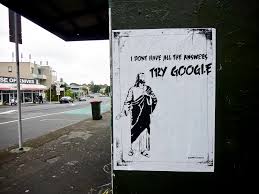 The value of keeping a dream journal is inherent in the practice itself. Simply recording your dreams on a regular basis will increase your dream recall, deepen your self-knowledge, and help you maintain emotional balance in waking life. You can enjoy these benefits even if you never look back at your journal after recording each dream.
The value of keeping a dream journal is inherent in the practice itself. Simply recording your dreams on a regular basis will increase your dream recall, deepen your self-knowledge, and help you maintain emotional balance in waking life. You can enjoy these benefits even if you never look back at your journal after recording each dream.
But if you do have the opportunity to look back and review your journal over a period of time, you can learn some amazing things about yourself and the world in which you live.
I’ve been keeping a dream journal for more than 30 years, and the discoveries never stop coming. I study my journal both for personal insight and for new ideas to explore in my research with other people’s dreams. At the end of each calendar year I go back over the last 12 months of my dreams to explore the recurrent patterns and themes, using the word search tools of the Sleep and Dream Database (SDDb) to make an initial survey. This year’s review provides an incredibly accurate portrait of my concerns and interests in waking life, and gives me lots of inspiration for new research to pursue.
The results of the initial word search analysis are presented in the table in the previous post. I compared the results of my 2018 dreams with my dreams from 2016 and 2017. I also compared them with the male and female “baselines.” The baselines are two large collections of dreams gathered by various researchers to provide a source of “normal” dreaming in the general population. (I describe the baselines in more detail in my Big Dreams book.)
To analyze these dreams I used the SDDb 2.0 template of 40 word categories in 8 classes, listed in the lefthand column. The percentages to the right of each category indicate how often a dream in the given set includes at least one reference to a word in that category.
In 2018 I remembered one dream each night, as I did in 2016 and 2017. The average length of the dreams increased during this time (102 in 2016, 111 in 2017, 116 in 2018). This suggests the word search results will tend to be a little higher in the 2018 set, just because there are more total words to search. This will also be true in comparisons with the baseline dreams, which have an average length of 100 words (females) and 105 words (males).
Keeping that in mind, the 2018 dreams had more references to vision and color than previous years, while other sensory perceptions (hearing, touch, smell & taste) stayed the same. The table doesn’t show it, but the most frequently mentioned colors in my 2018 dreams were white, black, green, gray, and blue. For both of these categories (vision and color), my dreams have many more references than either the male or female baselines.
The emotion references in the 2018 dreams are pretty similar to 2016 and 2017. I have much more wonder/confusion than the male and female baselines, and somewhat more happiness.
The 2018 dreams have a rise in references to family characters, and to females generally. The frequencies of references to animals, fantastic beings, and males are quite steady from 2016 to 2018. Compared to the baselines, my family references are still rather low, my animal references are high, and my female references are very high.
The three categories of social interaction—friendliness, physical aggression, and sexuality—are all steady from 2016 to 2018. The sexuality frequencies are somewhat higher than the baselines.
The frequencies of my 2016-2018 dreams and the baselines are all similar on the categories of walking/running, flying, and falling. My dreams have fewer references to death than the baselines.
The cognitive categories—thinking, speech, reading & writing—are consistent across 2016-2018, with higher frequencies of thinking than the baselines.
The cultural categories are also remarkably consistent from 2016 to 2018, with a slight rise in references to food & drink and art. Compared to the baselines, my dreams have fewer references to school and more to art.
Of the four elements, the frequencies of fire and air are consistent in my 2016-2018 dreams and the baselines. My dreams have more references to water and earth.
This kind of analysis is quite superficial, of course. It ignores personal associations, narrative flow, and all the subtle qualities of dreaming that can’t be captured in numbers. That’s true, and yet it’s also true that a well-crafted word search analysis can reveal some fascinating themes that are both accurate and thought-provoking.
One of the most striking results of this initial analysis is the remarkable consistency over time of most of the word categories. There are a few significant changes, which I’ll discuss in a moment. But those changes are more dramatic when set in the bigger context of strong consistency across word categories as diverse as air (3% in 2016, 4% in 2017, and 4% in 2018), touch (12, 11, 13), anger (7, 8, 8), fantastic beings (4, 4, 3), physical aggression (16, 17, 17), flying (7, 6, 7), and clothing (18, 19, 21). As wild and unpredictable as individual dreams may be, in the aggregate they seem to follow steady long-term patterns.
Against that background of consistency, the changes that do occur over time are all the more intriguing.
The rise in references to vision and color from 2016 to 2018 seems related to the lengthening of my dream reports over this time. As my reports get longer, I apparently need to use more vision and color words to describe what happens in each dream.
The rise in references to family characters might be a return to a more “normal” ratio of family in my dreams. The family frequencies in 2016 and 2017 are actually the lowest I’ve ever had (extending the comparison back to 2010), so 2018 may be a bounce-back year. This would make sense in relation to my waking life: 2016 was the beginning of the “empty nest,” when the last of our children moved out of the house.
The rise in references to female characters is the most intriguing. The references to male characters stayed mostly the same from 2016 to 2018 (47, 44, 43), so the 2018 increase in female references leads to a big gender gap (59% female vs. 43 male). The baselines actually have slightly higher frequencies of male references vs. female references, so the variation in my 2018 dreams is even more unusual.
What might account for this change? My first thought is political. American society, as I currently perceive it, is dominated by destructive masculine energies, and change is only going to come once we bring more women to positions of power. I’m trying harder than ever in waking life to listen to female voices, and that intention may have influenced the patterns of my dreaming.
Two other features of the analysis pique my curiosity.
One is the rise of references to art over 2016-2018 (7, 14, 15), which I believe correlates with my increased participation as a board member of the Oregon Shakespeare Festival. I wonder if other people who become more involved with an artistic group or practice also experience a rise in their dreams about art. I also wonder if my rise in art references might be connected to my higher frequencies of vision and color.
The other feature I’d like to explore further is the consistently low frequency of references to religion during all three years (3, 4, 3). This might seem odd since I have two graduate degrees in religious studies, and I’ve written several books about religion. But at the same time I never attend church, and I don’t belong to any religious group or denomination. My dreams seem to reflect the latter reality, my personal behavior rather than my scholarly pursuits.
In a recent survey that I’ve been analyzing with the help of Michael Schredl, we asked people to choose one of the following categories to describe their religious identity—Protestant, Catholic, Eastern Orthodox, Jewish, Muslim, Hindu, Buddhist, Mormon, Agnostic, Atheist, Nothing in Particular, and Something Else. I would definitely categorize myself as “something else”—not one of the religious identities, but not one of the non-religious identities, either. And it turns out (previewing the statistical findings Michael and I will soon publish) that people who identify religiously as “something else” have the highest interest in dreams compared to other groups. This makes me more curious than ever to understand the beliefs of people who religiously identify as “something else,” and how those beliefs relate to their attitudes towards dreaming.
I’m left with a final question, which will guide me in 2019: To what extent do these patterns reflect the past, and to what extent do they map the future?
####
This post first appeared in Psychology Today on February 5, 2019.

 Between January 8, 2015 and October 4, 2017, I remembered and recorded a dream every night for 1,001 consecutive nights. Now I’m studying the dreams and trying to find insights that can help in exploring the dream series of other people. I don’t expect anyone to accept my personal dreams as conclusive evidence for any general theory of human dreaming. Instead, I offer them as way of being transparent about the experiential grounding of my research pursuits. This is one of the ways I get ideas for new projects.
Between January 8, 2015 and October 4, 2017, I remembered and recorded a dream every night for 1,001 consecutive nights. Now I’m studying the dreams and trying to find insights that can help in exploring the dream series of other people. I don’t expect anyone to accept my personal dreams as conclusive evidence for any general theory of human dreaming. Instead, I offer them as way of being transparent about the experiential grounding of my research pursuits. This is one of the ways I get ideas for new projects. Most of these inferences—I’d say 11 of 13—are unmistakably accurate in identifying a continuity between a pattern of dream content and an aspect of my waking life concerns. The two I would question are numbers 10 and 12. Regarding the low frequency of dream references to school, I do in fact engage in a great deal of teaching and educational work, but it’s almost entirely online, and I rarely set foot inside a traditional school any more. Also, I no longer have school-age children living at home. So it seems my dreams are continuous with my physical behaviors relating to schools, but not with my computer-mediated educational activities.
Most of these inferences—I’d say 11 of 13—are unmistakably accurate in identifying a continuity between a pattern of dream content and an aspect of my waking life concerns. The two I would question are numbers 10 and 12. Regarding the low frequency of dream references to school, I do in fact engage in a great deal of teaching and educational work, but it’s almost entirely online, and I rarely set foot inside a traditional school any more. Also, I no longer have school-age children living at home. So it seems my dreams are continuous with my physical behaviors relating to schools, but not with my computer-mediated educational activities.